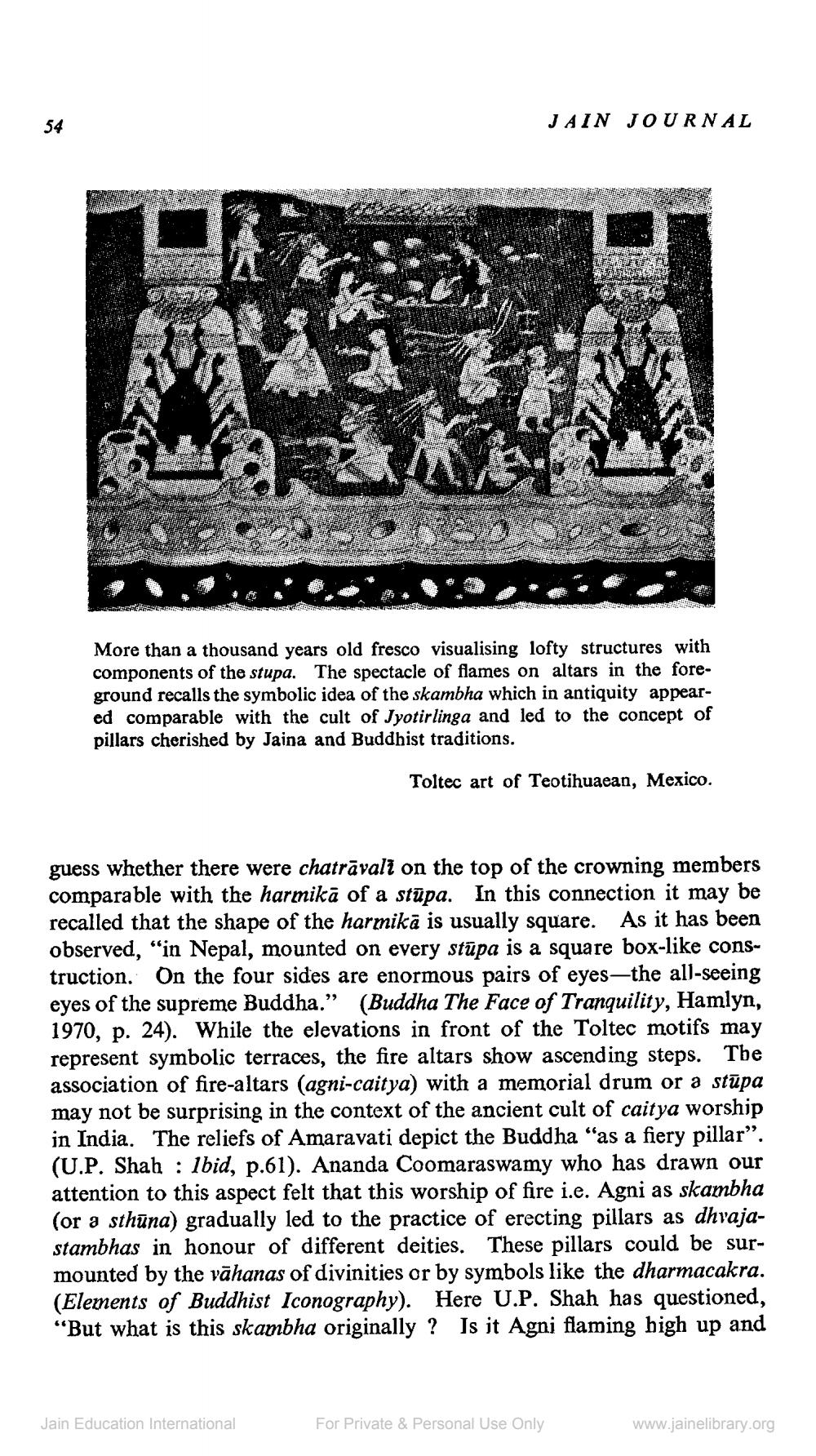________________
54
More than a thousand years old fresco visualising lofty structures with components of the stupa. The spectacle of flames on altars in the foreground recalls the symbolic idea of the skambha which in antiquity appeared comparable with the cult of Jyotirlinga and led to the concept of pillars cherished by Jaina and Buddhist traditions.
Toltec art of Teotihuaean, Mexico.
JAIN JOURNAL
guess whether there were chatravali on the top of the crowning members comparable with the harmika of a stupa. In this connection it may be recalled that the shape of the harmika is usually square. As it has been observed, "in Nepal, mounted on every stupa is a square box-like construction. On the four sides are enormous pairs of eyes-the all-seeing eyes of the supreme Buddha." (Buddha The Face of Tranquility, Hamlyn, 1970, p. 24). While the elevations in front of the Toltec motifs may represent symbolic terraces, the fire altars show ascending steps. The association of fire-altars (agni-caitya) with a memorial drum or a stūpa may not be surprising in the context of the ancient cult of caitya worship in India. The reliefs of Amaravati depict the Buddha "as a fiery pillar”. (U.P. Shah Ibid, p.61). Ananda Coomaraswamy who has drawn our attention to this aspect felt that this worship of fire i.e. Agni as skambha (or a sthuna) gradually led to the practice of erecting pillars as dhvajastambhas in honour of different deities. These pillars could be surmounted by the vahanas of divinities or by symbols like the dharmacakra. (Elements of Buddhist Iconography). Here U.P. Shah has questioned, "But what is this skambha originally? Is it Agni flaming high up and
Jain Education International
For Private & Personal Use Only
www.jainelibrary.org




